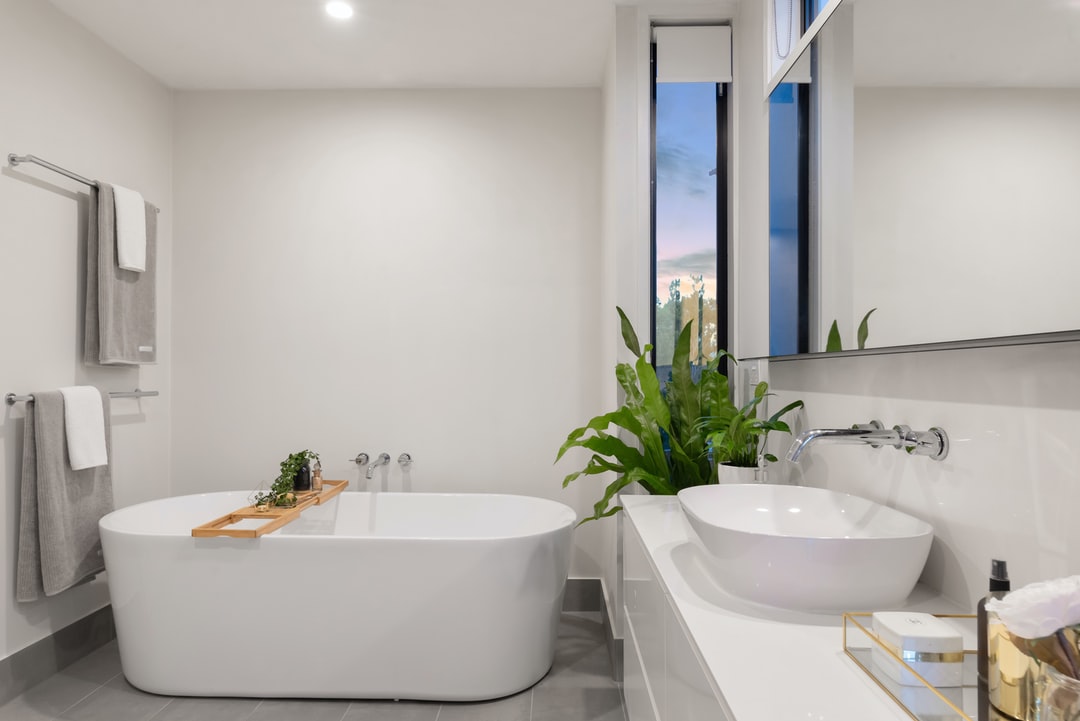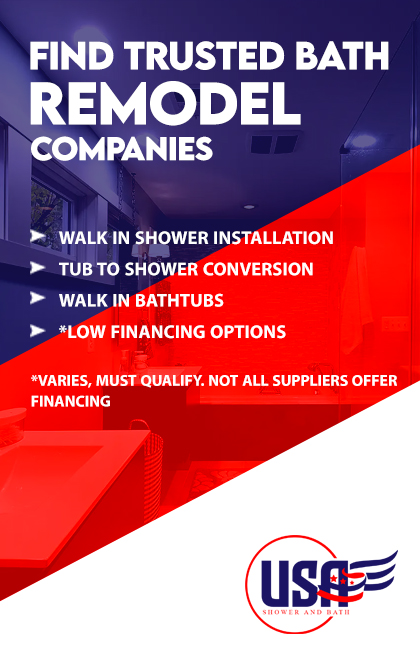
Do You Need a Permit to Remodel a Bathroom?
Remodeling a bathroom can be a significant undertaking, both in terms of time and budget. While most homeowners focus on design aspects, such as tile choices or fixtures, one crucial detail often gets overlooked: the necessity of obtaining a permit. This blog aims to address the often complicated question, “Do you need a permit to remodel a bathroom?” By understanding the ins and outs of bathroom remodeling permits, you can ensure that your renovation adheres to local codes and regulations.
Why are Permits Important?
At first glance, obtaining a permit might seem like just another bureaucratic hurdle. However, permits serve essential functions:
- Safety: Building codes, which dictate the requirements for permits, are established primarily for safety reasons. They ensure that electrical, plumbing, and structural work are completed correctly and safely.
- Value: If you ever plan to sell your home, potential buyers (and their lenders) may want proof that all work, including bathroom remodels, was done with the proper permits. Without them, you might face lower valuations or demands for post-inspection corrections.
- Avoiding Penalties: Performing work without a necessary permit can result in hefty fines. If the city discovers unpermitted work, they can even demand that the work be torn out and redone.
When Do You Need a Permit for Bathroom Remodeling?
The need for a permit largely depends on the scale of the work and local regulations. Here’s a breakdown:
- Extensive Remodels: If you’re moving or installing new plumbing or electrical systems, or altering the structure (like removing a wall), you’ll likely need a permit.
- Window Additions or Replacements: If you plan on adding a new window or enlarging an existing one, this usually requires a permit to ensure proper structural integrity.
- Major Plumbing Work: Replacing a faucet? Probably no permit needed. However, if you’re relocating your shower, sink, or toilet, then a permit is likely required.
- Electrical Changes: Adding or relocating electrical outlets, or installing new lighting configurations, especially in a moist environment like a bathroom, usually calls for a permit to ensure safety standards are met.

When Might You Not Need a Permit?
While many bathroom remodel tasks require a permit, not everything does:
- Cosmetic Changes: If you’re merely updating the paint, adding a new mirror, or replacing fixtures, you typically won’t need a permit.
- Minor Plumbing: Replacing a showerhead or faucet usually won’t require a permit.
- Flooring: Updating your bathroom floor, unless it involves structural changes, typically doesn’t need a permit.
However, always check with your local municipality or county to be sure, as regulations can vary.
How to Obtain a Permit
If your bathroom remodel requires a permit, follow these general steps:
- Visit Your Local Building or Planning Department: They will provide the specific guidelines and requirements for your area.
- Submit Plans: For more extensive remodels, you might need to submit detailed plans. It might be wise to hire a professional for this step.
- Pay the Fee: There’s typically a fee associated with obtaining a permit, which can vary based on the project’s scope and your location.
- Await Inspection: Once the work is done, an inspector will check the remodel to ensure it meets local codes. If everything is up to standard, you’ll receive approval. If not, you might have to make corrections and have the work inspected again.
While obtaining a permit might seem like an extra task on an already long to-do list, it’s a crucial step in many bathroom remodels. By ensuring your renovation meets local codes, you’re not only guaranteeing the safety of your household but also potentially adding value to your home. Before starting any project, always check local regulations and consult with professionals if you’re unsure. Your future self might thank you for the extra effort you put in now.

Risks of Not Having Proper Permits for Bathroom Remodeling
Skipping the permit process might seem like a tempting way to save time and money, but the potential risks and costs that arise from bypassing this crucial step can far outweigh the initial benefits. Before you decide to sidestep the permit requirements for your bathroom renovation, consider the following risks:
- Safety Concerns: Without proper permits and subsequent inspections, there’s a chance that the remodeling work might not be up to code. This can lead to dangerous conditions in your bathroom, such as faulty wiring, which can cause electrical fires, or incorrect plumbing installations, which can lead to leaks or water damage.
- Future Legal and Financial Headaches: If local authorities find out that you’ve done work without the necessary permits, you could face fines or be required to undo the work you’ve completed. This means you might end up paying twice: once for the original, unpermitted work and again to correct it.
- Complications with Insurance: Should anything go wrong in the future, like a plumbing disaster or an electrical fire, your insurance company might refuse to cover the damages if they discover that the renovation work was done without proper permits.
- Decreased Home Value: When the time comes to sell your home, prospective buyers might be wary of purchasing a property with unpermitted work. Even if they’re interested, the unpermitted work can become a point of contention during negotiations, potentially lowering the sale price or causing the sale to fall through entirely.
- Challenges in Refinancing: Much like potential buyers, mortgage lenders are often cautious about homes with unpermitted work. If you’re looking to refinance your home, the absence of required permits might cause complications or even result in a declined application.
- Lost Time: While obtaining a permit might seem like a time-consuming step, it can save time in the long run. Unpermitted work can lead to future renovations or repairs, especially if that work wasn’t done to code. In essence, the time you think you’re saving by skipping permits might be lost in future corrections.
- Limited Access to Expertise: Part of the permitting process usually involves inspections by experts who can identify potential problems before they become significant issues. By avoiding this process, you miss out on this layer of expertise and oversight.
- Moral Considerations: On a broader note, permits and building codes exist for a reason: to protect homeowners and the community at large. Choosing to bypass these regulations might be seen as neglecting one’s responsibility to the community.
While the allure of saving time and upfront costs by skipping the permit process might seem enticing, the potential long-term risks and costs can be significant. It’s always advisable to follow local regulations and prioritize the safety and integrity of your home. Remember, cutting corners now might cost you more in the end.

Cost of Obtaining a Permit for Bathroom Remodeling
When planning a bathroom remodel, it’s essential to factor in the cost of the necessary permits into your overall budget. This cost can vary widely based on several factors:
- Location: The region, state, or even city where you live can significantly influence the cost of a remodeling permit. Some cities might charge a flat fee, while others might base the fee on the estimated cost of the project or the square footage affected.
- Scope of the Project: A minor remodel, like updating fixtures, might not require a permit or could come with a lower fee. In contrast, a more extensive renovation involving structural changes, electrical work, or plumbing adjustments will often necessitate more expensive permits.
- Special Cases: If your home is located in a historic district or an area with special zoning regulations, you might face additional fees or requirements. Some zones may require architectural reviews or special permissions before you can make significant changes to your property.
- Expedited Services: If you’re in a hurry and need the permit processed quickly, some municipalities might offer an expedited service for an additional fee.
- Additional Inspections or Reviews: Some projects might require multiple inspections or specialized evaluations (like an electrical or plumbing review), each potentially carrying its own fee.
On average, as of 2023, homeowners can expect to pay anywhere from $100 to $1,000 for a bathroom remodeling permit, with the cost skewing higher for major renovations or homes located in cities with steeper permitting fees. However, it’s crucial to check with your local building department or permitting office for precise figures.
While this might seem like an added expense, remember that the cost of the permit can save you a considerable amount in potential fines, repairs, or issues down the line. Plus, it ensures that your remodeling project aligns with local safety standards, ensuring peace of mind for both you and future occupants of the home.

DIY vs Professional Bathroom Remodeling: What You Need to Know
The decision to take on a bathroom remodeling project by yourself or to hire professionals is a significant one, with various factors to consider. The requirement of permits plays a pivotal role in this decision-making process. Here’s a breakdown of what you need to know:
1. Expertise and Skill Level:
- DIY: If you’re considering a DIY project, you need to honestly assess your skills and expertise. Simple tasks like painting or updating fixtures might be within the realm of a handy homeowner. However, more complex jobs like rerouting plumbing or installing electrical fixtures can be challenging without the necessary know-how.
- Professional: A licensed contractor or specialized bathroom remodeler will have the expertise to handle any unexpected issues that arise during the project. They are also more familiar with building codes and regulations, ensuring compliance throughout the process.
2. Permit Acquisitions:
- DIY: Obtaining the necessary permits for a DIY remodel can be a tedious process for the uninitiated. Homeowners will need to research what permits are required, gather the necessary documentation, and possibly even draft or provide project schematics.
- Professional: Most professional remodelers include permit acquisition as part of their service package. They’re familiar with the local permitting office, know exactly what’s required, and can streamline the process, saving time and potential headaches.
3. Quality and Warranty:
- DIY: While there’s a sense of pride in completing a project with your own two hands, there’s no warranty to fall back on if something goes wrong or if there’s an error in the installation process.
- Professional: Most professionals offer guarantees or warranties on their work. In the event of an issue, they can be called back to rectify it at no extra cost. Plus, professionals often have relationships with suppliers, meaning higher quality materials at possibly lower prices.
4. Inspection and Compliance:
- DIY: Post-renovation, your bathroom might need to pass an inspection to ensure that the work complies with local codes, especially if structural, electrical, or plumbing changes were made. DIY remodelers will need to schedule and possibly pay for this inspection out of pocket. If your project doesn’t pass, you’ll be on the hook for making the necessary adjustments.
- Professional: Contractors will typically handle inspections as part of their job, ensuring that all changes meet local regulations. If the work doesn’t pass an inspection, it’s usually up to the contractor to make it right.
5. Time and Effort:
- DIY: While you might save on labor costs, DIY projects often take longer, especially if you’re learning as you go. Consider if the time and effort required is worth the potential savings.
- Professional: Hiring a professional means your bathroom will likely be completed more quickly and efficiently, and you won’t have to invest personal time and energy into the project.

While DIY projects can offer cost savings and the satisfaction of personal accomplishment, they often come with challenges, especially concerning permitting and compliance with local regulations. Professionals not only bring expertise to the table but also simplify the permitting and inspection process, ensuring that your bathroom remodel meets all necessary standards and codes. Before diving into a bathroom remodel, weigh the pros and cons and decide which approach aligns best with your resources, skills, and long-term goals.
How Much Does It Cost to Remodel a Bathroom?
Remodeling a bathroom can vary in cost depending on the scope of the project, the quality of materials used, and regional differences in labor costs. Here’s a breakdown of average expenses as well as costs associated with more advanced remodeling choices:
Average Costs
Basic Remodel: This typically involves updating fixtures, repainting, and possibly replacing the vanity or lighting.
- Cost Range: $3,000 to $7,000
Mid-Range Remodel: This encompasses more extensive changes like retiling, replacing the bathtub or shower, updating the toilet, and potentially changing out the vanity for something more substantial or modern. It might also involve updating faucets and other hardware.
- Cost Range: $10,000 to $15,000
Deluxe Remodel: If you’re thinking about a complete overhaul with high-end materials, possibly expanding the bathroom’s footprint, relocating plumbing fixtures, or adding luxurious features like heated floors or a steam shower, you’re looking at a deluxe remodel.
- Cost Range: $30,000 to $50,000+
Advanced Remodeling Options and Their Costs
Walk-In Shower with Frameless Glass: Frameless glass showers are sleek and modern, offering an open feel to the bathroom.
- Cost Range: $1,000 to $5,000 for the glass installation alone, with total costs including plumbing and tiling often landing between $5,000 and $10,000.
Freestanding Bathtub: These tubs act as a statement piece, becoming the bathroom’s focal point.
- Cost Range: $1,500 to $5,000 for the tub itself, with installation costs varying depending on plumbing adjustments.
Radiant Floor Heating: For those cold mornings, radiant floor heating can be a game-changer.
- Cost Range: $5 to $10 per square foot, with average bathrooms costing around $500 to $800 for installation.
Double Vanity with Stone Countertop: A double sink setup with a high-quality granite, marble, or quartz countertop offers both functionality and luxury.
- Cost Range: $1,500 to $3,500 for a basic double vanity installation, with high-end choices reaching up to $7,000 or more.
High-End Tiles (e.g., natural stone): Quality tiles not only look fantastic but can last a lifetime if maintained properly.
- Cost Range: $10 to $50 per square foot. For an average-sized bathroom, this can translate to a total of $1,000 to $5,000 just for the tiles.
Smart Bathroom Features: These might include automatic faucets, intelligent mirrors with built-in lighting, or digital shower controls.
- Cost Range: Varies widely based on the feature. For instance, a smart mirror might cost between $400 and $1,500, while digital shower controls can range from $500 to $2,000.
It’s important to note that labor costs can vary significantly depending on where you live. In some areas, labor might account for up to 40-60% of the project cost. As with all remodeling projects, it’s advisable to get multiple quotes to understand your local market better and to set a budget that accounts for unexpected expenses. Proper planning and understanding the associated costs ahead of time can make your bathroom remodeling project a smoother experience.

Top Bathroom Remodeling Trends in 2023
As the year unfolds, several distinct trends have emerged in the world of bathroom remodeling. These trends highlight a blend of luxury, functionality, and environmental considerations. If you’re considering updating your bathroom, here’s what’s trending in 2023:
Sustainable Materials
The push towards environmentally-friendly homes continues to influence bathroom designs. Homeowners are opting for materials like bamboo, recycled glass tiles, and countertops made from sustainable resources. These materials don’t just reduce environmental impact but also add a unique aesthetic appeal to the bathroom.
Matte Finishes
Glossy finishes are taking a back seat to matte finishes this year. Whether it’s fixtures, tiles, or vanities, the muted and sophisticated appearance of matte finishes offers a modern touch to the bathroom space. Matte black and matte charcoal are particularly popular choices for fixtures.
Neutral Tones with Bold Accents
Neutral shades like whites, grays, and beiges remain popular for creating a serene bathroom atmosphere. However, 2023 sees a twist to this trend with homeowners integrating bold accent colors. Think a predominantly white bathroom with vibrant blue or emerald green accents in tiles, rugs, or fixtures.
Smart Bathroom Tech
The smart home movement is making its way into bathrooms. Features like touchless faucets, smart mirrors with integrated LED lighting and anti-fog capabilities, voice-activated showers, and even intelligent toilets with bidet features and self-cleaning are becoming more standard in bathroom remodels.

Open Showers
Open shower concepts, which do away with traditional doors or curtains, are on the rise. They offer a spacious feel, make the bathroom look larger, and provide an uninterrupted flow in design. Additionally, they can be particularly useful for accessibility, offering a barrier-free entry.
Floating Vanities
Floating vanities, attached to the wall without reaching the floor, offer a sense of space and a contemporary edge to bathroom designs. These vanities are not only chic but also provide the option for under-vanity lighting, adding a dramatic touch.
Natural Elements and Biophilia
There’s a growing desire to connect indoor spaces with nature. Bathrooms in 2023 often incorporate elements of biophilia, using natural wood, stones, indoor plants, and even water features. Windows or skylights, when possible, are also being expanded to let in more natural light and offer views of greenery.
Textured Tiles
Tiles aren’t just about color or pattern anymore; texture plays a crucial role in 2023. Think tiles with 3D patterns, ridges, waves, or embossed designs. They add a tactile dimension, making walls or floors interesting both visually and to the touch.
Integrated Storage Solutions
Bathroom storage is getting smarter. Rather than standalone cabinets or shelves, integrated storage solutions like built-in recessed shelves in showers, pull-out cabinets, and under-sink organizers are maximizing space while maintaining a sleek design.
Mixed Metals
While coordinating metals was once the norm, mixing metals is the trend now. Homeowners are creatively blending fixtures of brass with matte black or chrome with copper, adding depth and a designer touch to the bathroom.
Staying in tune with current trends ensures your bathroom not only feels contemporary but also adds value to your home. However, always prioritize your personal preferences and functional needs over what’s trending, ensuring your remodeled bathroom stands the test of time both in style and utility.

The Intricacies of Permits for Bathroom Remodeling
Delving deeper into the world of permits for bathroom remodeling can shed light on why they’re essential and the nuances involved in obtaining them.
Why Cities and Municipalities Require Permits
Building codes are sets of regulations governing the design, construction, alteration, and maintenance of structures. They specify the minimum requirements to adequately safeguard the health, safety, and welfare of building occupants. When remodeling a bathroom, changes in structural elements, plumbing, or electrical systems could pose risks if not done correctly.
Permits ensure that your remodeling project adheres to local building codes. Inspections that usually accompany permits make sure the work is done safely and to standard. This ensures the safety of the occupants and can avoid costly mistakes that might need fixing later.
Types of Permits You Might Need
Depending on the scope of your bathroom remodeling project, you might need different types of permits:
- Plumbing Permit: If you’re relocating fixtures, changing the plumbing layout, or adding new fixtures, this permit ensures that the plumbing work adheres to safety standards.
- Electrical Permit: Any modifications to the existing electrical system, such as adding new outlets, light fixtures, or exhaust fans, typically require this permit.
- Building/Structural Permit: If you’re making changes to load-bearing walls, changing the bathroom’s footprint, or doing extensive renovations, a building or structural permit might be required.
Process of Obtaining a Permit
- Plan Submission: Before a permit is issued, homeowners or their contractors usually need to submit detailed plans of the proposed remodeling project. These plans must be clear, indicating changes to structural, plumbing, or electrical systems.
- Review Phase: After submission, the local building department reviews the plans. They ensure that the proposed changes comply with local building codes. If any issues arise, you might be asked to revise and resubmit the plans.
- Inspection: Once the work begins, inspectors might visit your home at various stages of the remodeling project. They’ll check to ensure that the work aligns with the submitted plans and complies with building codes.
- Completion and Final Inspection: After the project is completed, a final inspection is typically required. If everything is up to code, you’ll be issued a certificate of completion or a similar document. This certificate is vital for insurance purposes and can be beneficial if you ever decide to sell your home.

The Long-Term Value of a Permit
Beyond just adhering to legal requirements, obtaining the necessary permits can enhance the long-term value of your home. Prospective buyers will be assured that the bathroom remodel meets safety standards, which can make your property more attractive in the real estate market. Furthermore, insurance companies might dispute claims from accidents related to unpermitted work, making the permit process a wise investment.
While the process of obtaining permits might seem tedious, it is a crucial step in ensuring that your bathroom remodeling is safe, up to code, and adds value to your home. It’s always a good practice to check with your local municipality or a professional contractor about the specific permit requirements for your area and project.

Best Bathroom Remodeling Companies in 2023
In a time when trends and designs change rapidly, it’s essential to choose a remodeling company that understands the intricacies of creating a bathroom space that is both functional and aesthetic. Here’s a list of the top bathroom remodeling companies in 2023 that have garnered accolades for their innovation, craftsmanship, and commitment to customer satisfaction:
- AquaBath Solutions: Renowned for their eco-friendly solutions and sustainable designs, AquaBath Solutions leads the pack in creating luxurious yet environmentally conscious bathrooms.
- Modern Elegance Interiors: This company is the go-to choice for those looking for sleek, contemporary designs. They excel in integrating smart technology into bathrooms for enhanced comfort.
- Heritage Bathroom Crafters: For those who prefer a touch of vintage charm in their bathroom spaces, Heritage Bathroom Crafters specialize in integrating traditional designs with modern amenities.
- GreenSpace Creations: Focusing on sustainable and green solutions, GreenSpace Creations has emerged as a favorite for homeowners looking to reduce their carbon footprint.
- Lux Bath: Known for their high-end, luxurious designs, Lux Bath ensures each project is treated as a bespoke piece of art, offering unique bathroom solutions tailored to individual tastes.
- Bathroom Bliss Innovators: Merging functionality with design, this company is especially adept at optimizing small bathroom spaces, making them appear more spacious and airy.
- Urban Bath Co.: Catering primarily to urban dwellings, Urban Bath Co. has mastered the art of designing bathrooms that are chic yet compact.
- EcoPure Baths: This company stands out for its commitment to using organic, non-toxic materials, ensuring the safety and well-being of its clients.
- Crystal Clear Designs: Famed for their transparent pricing and impeccable design sense, Crystal Clear Designs brings affordability and luxury together.
- Infinite Bathroom Solutions: With a reputation for their cutting-edge designs and adaptive solutions, this company has become a favorite among those who love futuristic bathroom designs.
Choosing the right bathroom remodeling company depends on your personal style, the size of the project, and the budget. Whether you’re looking for a modern overhaul or a traditional revamp, 2023 has a wealth of options that cater to every taste and preference. Before settling on a company, always look for reviews, ask for references, and check their portfolios to ensure their style aligns with your vision. With the right company, your dream bathroom is just a renovation away!
